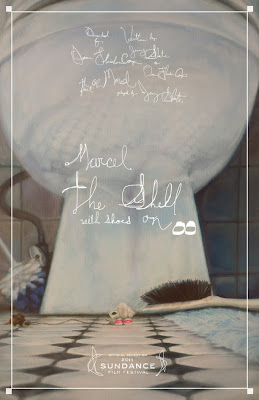 "Exploring That Old Knee-Slapper, Suicide."
"Exploring That Old Knee-Slapper, Suicide." 's
Under the Radar Festival charges on, and with it, a brilliant performance of what
Ben Brantley deftly called 'theatrical urgency'-- Daniel
Kitson's The Interminable Suicide of Gregory Church.
Aside from the bits of sparkling review found on the theater's website, I had no real prior knowledge of
Kitson or his show before freezing my way to St. Ann's on Wednesday night. The site also holds and a brief yet poignant description that summed up the show as 'a story of death postponed by life.' It's a one man show about the discovery of over 15,000 suicide notes written by Gregory Church (and another 15,000 or so responses) in a loft in West Yorkshire.
Under The Radar:
Keepin' it random.
Daniel
Kitson enters the arena setup of St. Ann's with a glass of water, a reporter's notebook, and what we can only assume are the same clothes he put on upon waking that morning. He sports a full beard, shaggy hair, thick rimmed frames, and a slightly awkward yet confident gait-- he's someone who touches his face a lot, who shoves up his glasses at the arch, and fidgets with his keys at the dinner table. Those initial moments of '
Hello, I'm Daniel, thank you all for coming, I hope you like it," made us all relax into the evening knowing that, yes, we know this guy, and yes, we're interested in what he has to say. He's someone with whom we'd get along.
He begins the show hurriedly with the back story of what becomes an obsessive and
ultimately voyeuristic two year journey as the self appointed curator the life of Gregory Church. We expect
Kitson to at some point relax as well, to catch up with himself and his telling, but he instead charges rampantly on, as if his mind works faster than the average human, and his speech-- graced with a stunning vocabulary and illustrative structure-- can't quite keep up. The result is 90 minutes of uninterrupted explosive storytelling that I wish I could rewind and watch again. It happens fast-- yours truly let her mind wander twice and missed two extremely important points that I had to piece together later with research and conversation. It's that smart, it's that good.
The life of Gregory Church-- that we know only through the letters as told by
Kitson-- touches on the ol' George Bailey model: '
Remember George, No man is a failure who has friends'. We meet Church as a retired, unhappy, miserable old man who plans to kill himself by noose the next morning, after writing a few (56, initially) suicide notes. We leave knowing that those 56 notes expanded to 30,000 and that Church lived on to experience a life parenthesized by his impending death. It's poignant, touching, and humbling to unravel a tale of two men-- one obsessively writing, the other obsessively reading-- whose lives become entwined by relationships alone.
Yet therein exists a third layer to this web of understanding. The catch here (catch is probably the wrong word, but bear with me) is that Kitson mentioned in his opening remarks that the entire play to follow is fiction-- that he made it all up. Although unlike any other work of fiction or novel, or various other styles of created prose, this performance in particular feels outrageously true. I've been trying to nail down why it's more difficult to believe it to be fiction that not (usually its the other way around). I suppose it is simply a testament to Kitson's performance.
The show ended as abruptly as it began, with a quick '
well, that's what I wanted to tell you, that's the story, I hope you enjoyed it.' (Further convincing us of its truth! He didn't even think of a poetic ending!) Although the swift exit left my head spinning for the entire walk home, unsure of what just happened, wishing I could ask more questions, wanting to see those letters myself-- just as Kitson intended.
The Interminable Suicide of Gregory Church is playing through Jan 30th at St. Ann's Warehouse in DUMBO.
photo: NYT
 As I mentioned last week, my ol' stomping grounds are suddenly becoming the place to be. Shocking! Last week, just blocks from the aforementioned Hanson Dry, Dean Street opened in the old Tavern on Dean building, with The Spotted Pig's Nate Smith signed on as head chef, and his wife Sophie Kamin of Four & Twenty Blackbirds as pastry chef. Again, SHOCKING. (I actually had no idea that Tavern on Dean had closed, but to be honest, I was okay with it. They weren't all that friendly there.)
As I mentioned last week, my ol' stomping grounds are suddenly becoming the place to be. Shocking! Last week, just blocks from the aforementioned Hanson Dry, Dean Street opened in the old Tavern on Dean building, with The Spotted Pig's Nate Smith signed on as head chef, and his wife Sophie Kamin of Four & Twenty Blackbirds as pastry chef. Again, SHOCKING. (I actually had no idea that Tavern on Dean had closed, but to be honest, I was okay with it. They weren't all that friendly there.)


















